Tel Kedesh is one of the largest tel sites in the Upper Galilee, Israel. A tel is a hill or mound, and the word is used to refer to a type of archaeological site. Archaeological tels result from the accumulation and erosion of material deposited by human habitation over a long period of time. The oldest part of Tel Kedesh dates back to the early Bronze Age (3150–2300 B.C.)
There are two main conservation goals at Tel Kedesh: preservation of movable artifacts like vessels, tools, and coins; and preservation of important, immovable architectural features, like painted wall plaster.
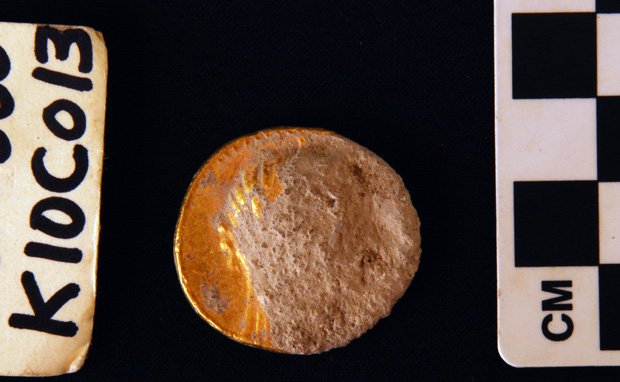
A coin found at Tel Kedesh before cleaning.
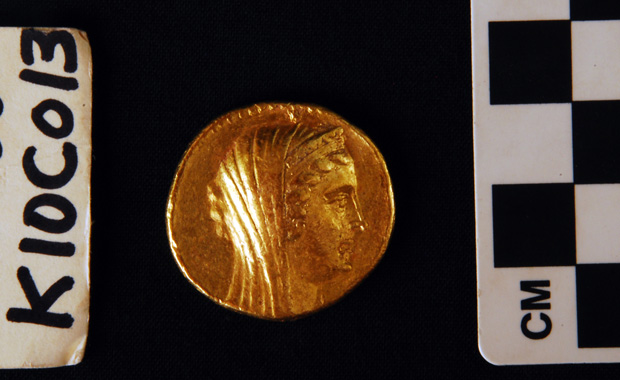
The same coin after cleaning.
One typical conservation treatment performed in the lab is the cleaning and reconstruction of excavated ceramics. Archaeologists use the shapes of ceramic vessels, as well as their surface decoration (like glaze or slip), to date different levels in a site. At Kedesh, however, ceramic sherds have a thick, hard accretion on the surface that must be removed before the surface can be seen or the fragments glued together. Conservators at Kedesh also treat artifacts made of glass, bone, stone, and metal.
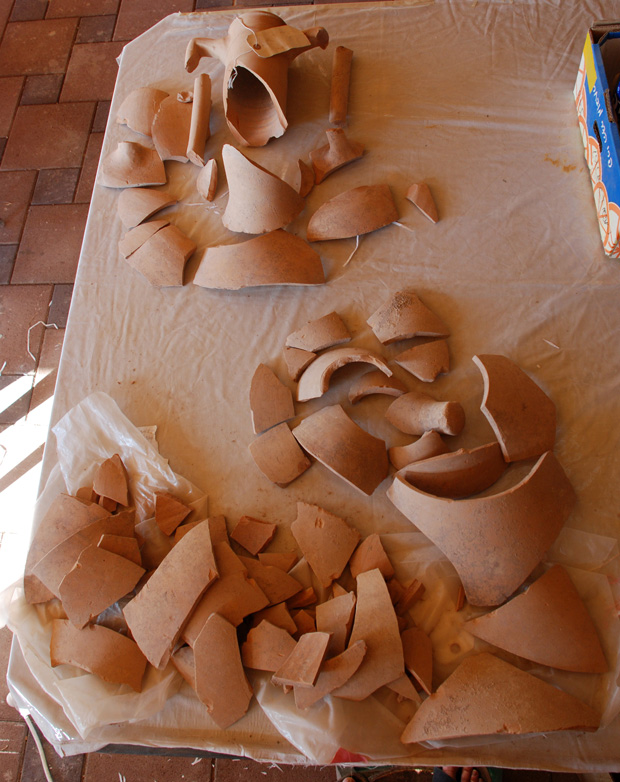
An amphora found at Tel Kedesh before reconstruction.

The same amphora during reconstruction on site.
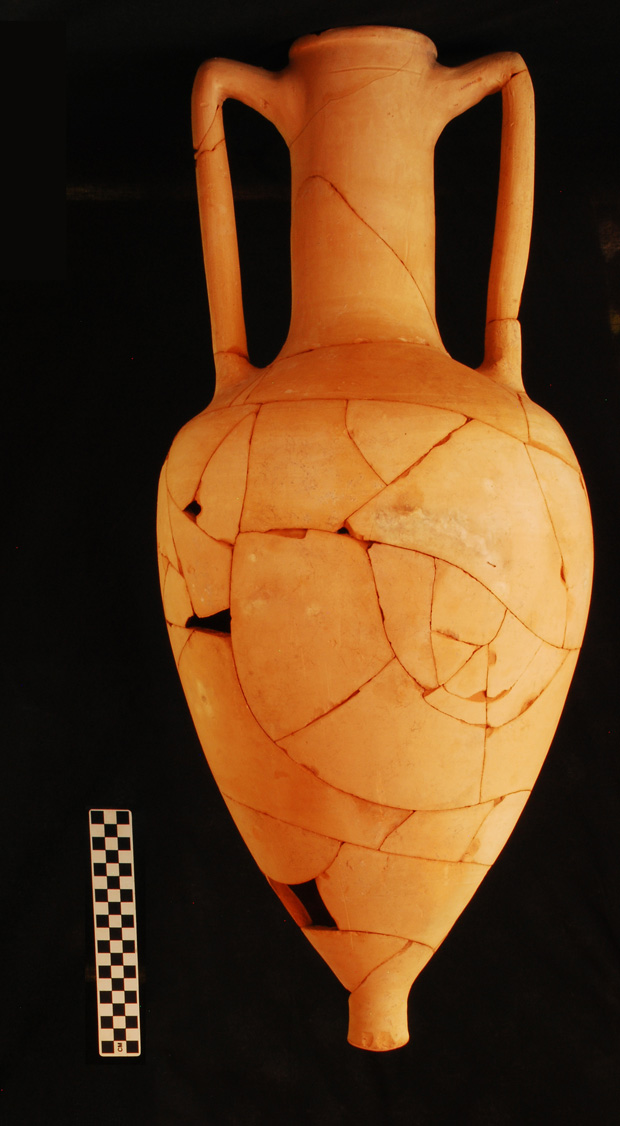
The reconstructed amphora.
Conservation of in-situ architecture at Kedesh is also important. One ongoing project has been the stabilization of rare, painted plaster which remains in place on many walls at the site. To keep the plaster secure, conservators use custom-mixed grout to strengthen the fragile edges and, in some cases, to reattach fallen fragments to the walls.
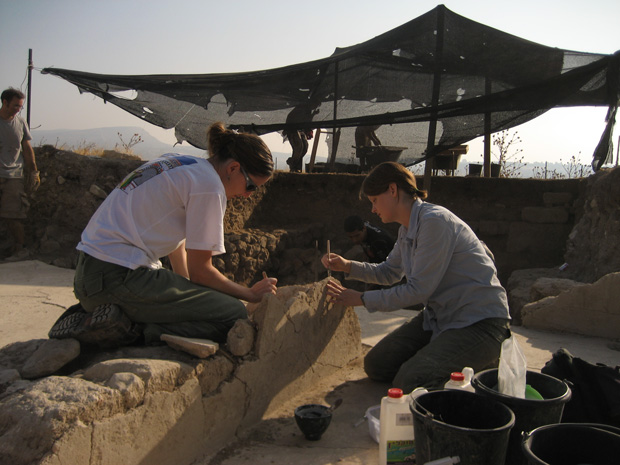
Conservators working on the in-situ walls.
